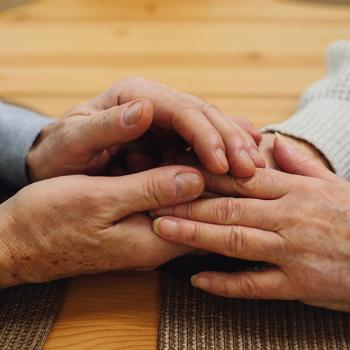I began to carefully discern the areas where sins and quirks collide, such as my relationship with housekeeping. I'd embraced the fact that with my scatter-brained nature, I'm not a naturally gifted homemaker; my house is never going to look like something out of a lifestyle magazine. But it was also clear that sometimes the sin of sloth was at work when I neglected to keep my living space clean. Taking this to confession, I received the grace to begin to reject my slothful behavior while still accepting my God-given nature.
As the sifting process went on, something surprising happened: I was unearthing my real self. Before my conversion, I had confused certain sinful tendencies with inherent personality traits. To be truly myself, I thought, was to be cynical, short-tempered and lazy. That's just who I am, I rationalized. But I've come to understand that to be a saint is, among other things, to be wholly yourself. The more time I spent asking God to show me what it meant for me to be a good Catholic, the more I realized that he was showing me what it meant to be me.
This brought a peace with who I am and a comfort in my own skin that I'd never known was possible. The inner transformation created a ripple effect in almost every area of my life.
Once I realized that I didn't have to be like my seemingly perfect friend Teresa, I was able to relax and get to know women like her on a deeper level, drawing inspiration from them rather than comparing myself to them, Sure enough, I found that they often had struggles in areas I didn't. Now that I wasn't so worried about "failing" according to some preconceived notion of what it means to observe the Church year, I even stepped up my celebrations of the liturgical seasons, buying purple napkins and a wreath one Advent—though I usually forgot to light the candles.
Sister Bridget Haase once counseled listeners of her radio show to "sparkle with self-forgetfulness." In order to show others the love of Christ, she explained, you have to think of others more than you think of yourself. Ironically, my insecurity about how to be a Catholic woman the "right" way had led me to focus almost exclusively on myself. When I socialized, I was always more concerned about whether I was saying something inappropriate or un-Catholic than I was about the wellbeing of the people around me. It was only when I learned to accept myself that I could forget myself; and it was only then that I could show others the love of Christ.
The Answer to the Prayer
In the midst of these discoveries, my effort to find an image of the modern Mary had shifted to the backburner. I suspected that the notion to pray for such a guide was not inspired by the Holy Spirit after all, but was just another of my zany ideas.
Then one afternoon, as I walked through my living room, my mind abuzz with a hundred other thoughts, something caught my eye. I stopped in my tracks. It was one of those rare moments when the presence of the Holy Spirit is palpable, as if a breeze had swept through the room. I stared in bewildered surprise at—a mirror.
More precisely, at my reflection in a mirror. A chill went through me. My prayer had been answered: Here was my image of the modern Mary.
When she lived on earth, the Mother of God was probably not tall with pale skin and blue eyes, but I sensed God telling me as I stared at my reflection, This is what a holy woman can look like. If I wanted an image that captured true Catholic womanhood for me, I need look no further than the image of the woman in the mirror.
I stared for a moment at the familiar visage of the tired mom in jeans and a t-shirt. When I imagined her as the picture of perfect holiness, everything changed. I stood a little straighter. I smiled and the weary expression on my face faded away. I saw my great potential, and forgot about my faults.
At that moment, all the lessons I'd been learning sunk in on a visceral level. I took another glance at that woman, the person I'd thought of as outside the iron mold of what a Catholic woman looked like. Not only could she be a good Catholic woman, I realized, but God could use even her to change the world.
Reject Your Sins, Love Your Quirks, and Go Change the World
Though some of us have been slow to catch on, the Church has always celebrated the many faces of true Catholic femininity. At the triumphant end of the apostolic letter Mulieris Dignitatem, Pope John Paul II proclaims:
The Church gives thanks for each and every woman: for mothers, for sisters, for wives; for women consecrated to God in virginity; for women dedicated to the many human beings who await the gratuitous love of another person; for women who watch over the human persons in the family, which is the fundamental sign of the human community; for women who work professionally, and who at times are burdened by a great social responsibility; for "perfect" women and for "weak" women - for all women as they have come forth from the heart of God in all the beauty and richness of their femininity. ...




